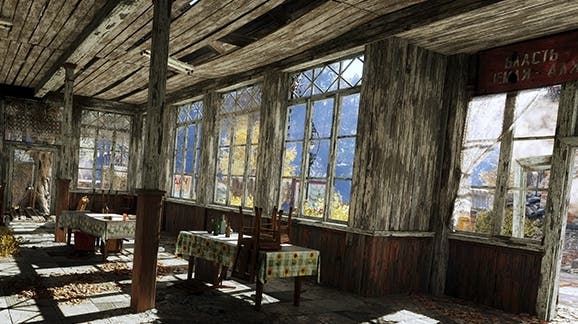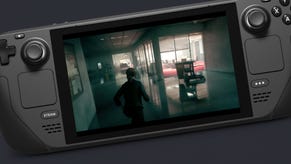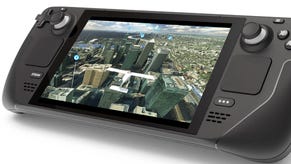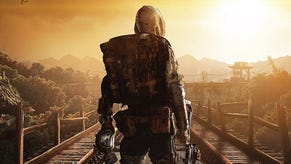How Metro Exodus uses Nvidia ray tracing to stunning effect
And the challenges facing developers using the cutting-edge RTX tech.
Nvidia showcased a number of ray tracing titles at its GeForce RTX launch and it was 4A Games' Metro Exodus - alongside DICE's Battlefield 5 - that impressed us most with its implementation of ray tracing technology. In fact, RTX on vs RTX off within the 4A title demonstrates the challenges and opportunities of the new hardware: right now, it seems we need to choose between remarkable realism and accuracy with a significant performance overhead, up against lighting based on established techniques - less accurate but still good-looking and much faster. Which will prevail?
First of all, it's important to remember that the RT cores within the Turing technology aren't powerful enough to provide a complete ray-traced rendering solution - processing power is finite, so the technology is effectively a new tool in the developer's toolbox and the end result is a hybrid combination of RT and standard rasterisation. DICE uses the RT cores for beautiful reflections, whereas 4A's approach is very, very different. Owing to its post-apocalyptic world, the major light sources are effectively just the sun and the moon, so the RT cores are put to work creating a diffuse global illumination implementation. In essence, ray tracing is a straight replacement for the game's standard lighting systems.
Light floods convincingly over the large open world terrain, producing some stunning scenes, but arguably the most noticeably complex light interactions occur within buildings, showcased effectively by 4A as shutters on windows rise, allowing light to flood into the room. In addition to this obvious 'wow' moment, ray tracing gives us remarkably accurate first bounce lighting, where the colour of certain objects can project onto other objects in the scene. And where there is light, there is also shadow, with the GI solution producing some remarkably effective ambient occlusion.
Side by side with the game's standard lighting solution, it's a fascinating preview of the rendering battles to come. Judged by the standards and constraints of established rendering hardware, 4A's non-RT lighting techniques are second to none - and as we are all used to these methods, the 'fakery' used in generating them does not stand out to us. However, with ray tracing enabled, there's clearly an extra dimension to the experience - standard light probes can capture a general ambience, but it's not so good at conveying aspects like the effects of directional light. Extremely small light bounces are also evident in the RT scene that you won't find using the standard renderer and not even high-end voxel-based ambient occlusion (like Nvidia's VXAO) can replicate the accuracy and subtlety of 4A's ray traced presentation.
But of course, in common with other RT titles, there is a cost - and this is the most contentious aspect of the RTX proposition right now. On the top-end RTX 2080 Ti, 4A is targeting 60 frames per second at 1080p resolution, and while the Gamescom pre-production build appears to operate mostly in the 50-60fps area, it can occasionally dip lower. The game is still in development and further optimisations are likely, but on a card where standard rasterisation should deliver high frame-rates at 4K, dropping down to 1080p on a £1000+ GPU may be hard to take. And of course, RTX 2080 and RTX 2070 are considerably less powerful than the monstrous ti, so how well will ray tracing work there?
There are some optimisations already in place. Based on our conversations with 4A rendering programmer Ben Archard, the studio's ray tracing solution is based on the concept of painting every pixel on-screen with the results of three projected rays - ambitious stuff, even at 1080p. For increased temporal stability, these results are jittered across multiple frames, with sample count adjusted according to the distance from the camera (an object far in the distance requiring fewer projected rays than an object that's much closer). 4A has also taken sensible precautions to keep processing loads reasonable: firing rays through individual leaves on translucent foliage may be the most accurate way forward but the visible result would be little different from not doing it at all - which is the logical approach taken here.
As the head-to-head comparisons in our main video here demonstrate, there are two key takeaways here - first of all, without ray tracing, Metro Exodus is a stunning game, showing an extremely talented developer at the top of its game, handing in highly impressive results at a time when the current generation of hardware is reaching its maturation point. All of those lighting techniques described by Nvidia's CEO Jen-Hsun Huang at Gamescom as being inaccurate or faked - they're all here, but they're extremely well implemented and the game looks great. So what is the ray traced difference and is it worth the premium? Over and above 'correctness' some scenes look as though they've been taken to a new level, lighting-wise. 4A's time-lapse demos - again seen in the main video on this page - showcase just how extraordinary an accurate, fully real-time global illumination implementation can look. In our view, this is a genuinely exciting vision of a potential future for the future of gaming graphics, it's just that this is obviously a first-gen implementation.
And as for improving performance? Well, over and above the inevitable optimisations to come in the lead-up to launch, there are potential routes forward here - the question is the extent to which 4A has the time and resources to implement them and whether they are a good fit for Metro Exodus' unique aesthetic. With the Star Wars Reflections RT demo, we've seen the non-Ti RTX 2080 use Nvidia's DLSS technology to take what we suspect to be a sub-1080p framebuffer, using Turing's tensor cores to produce a good-looking 1440p output.
In theory, the same tech could work for Metro - but the question is the extent to which the series' signature extreme detail may be compromised. As we saw playing the game at full 4K on Xbox One X, running at a native pixel count gets the best from 4A's beautiful artwork. In separate discussions with DICE about Battlefield 5, there was talk about decoupling the ray tracing resolution from the pixel-count of the rest of the image - but 4A's technique here does seem reliant on mapping those three projected rays to each native pixel. Clearly there are challenges ahead in bringing forth the rich potential of the RT technology, while at the same time ensuring that users get the resolutions and frame-rates they're expecting from top-end cards.
And of course, the bottom line is that fundamentally, right now, RT is a value-added feature for a game that'll still look tremendous without it, across a range of platforms. We checked out a non-RTX build at Gamescom that really was impressive, sampling a new level almost Crysis-like in nature - setting a fixed point goal, but with a 'wide' path through, opening the door to a range of ways to progress. It's a different flavour to the more open level previously showcased at E3, but solidifies the sense that this is a game with a huge amount to offer, and we can't wait to check out final code - ray traced or not - when Metro Exodus finally ships in February 2019.











